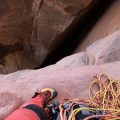Understanding Public Rights of Way
For solo walkers in the UK, understanding the legal framework surrounding public rights of way is essential to ensure both enjoyment and compliance during countryside walks. The UK boasts a unique and historic network of public access routes, each with specific legal definitions that directly impact what walkers can and cannot do.
Footpaths are designated paths on which the public has a right to walk on foot only. These are perhaps the most familiar type of right of way for solo walkers and are commonly found crossing fields, running alongside hedgerows, or winding through woodlands. Importantly, cycling and horse riding are not permitted on footpaths, making them ideal for those travelling by foot alone.
Bridleways offer greater versatility: while walkers are certainly welcome, these routes also permit horse riders and cyclists. For solo walkers, this means being mindful of sharing the space with others who may be moving at different speeds or using different modes of transport. It’s important to note that motor vehicles are not allowed on bridleways.
Byways, more specifically known as byways open to all traffic (BOATs), allow access not only for walkers, cyclists, and horse riders but also for motor vehicles. While these routes can offer solitude during quieter times, solo walkers should remain vigilant for occasional vehicles using the same path. Not all byways are maintained to the same standard as roads, so conditions can vary significantly.
Legally, these distinctions matter because they define your rights and responsibilities as a solo walker. Straying from marked rights of way can lead to trespassing on private land, so it’s crucial to pay attention to signposts and local maps. Understanding these terms ensures you remain respectful of both the law and the landowners whose property you cross during your journey.
Access Land and The Countryside and Rights of Way Act 2000
The Countryside and Rights of Way Act 2000 (CRoW Act) is a cornerstone piece of legislation for walkers in England and Wales. Its introduction marked a significant shift in the legal landscape, providing individuals, including solo walkers, with the statutory right to access certain areas of open country and registered common land—collectively known as access land. Understanding the impact of this Act, as well as how to identify and responsibly use access land, is essential for anyone wishing to explore the countryside alone.
What is Access Land?
Access land refers to designated areas where the public has a legal right to roam on foot. These typically include:
| Type of Access Land | Description |
|---|---|
| Mountain, Moor, Heath, Down | Natural landscapes often away from urban centres; important habitats and scenic walking areas. |
| Registered Common Land | Land historically shared by local communities for grazing or resources; now open to walkers under CRoW. |
Impact of the CRoW Act on Solo Walkers
The CRoW Act empowers solo walkers by granting them freedom to walk across extensive tracts of rural England and Wales without needing to stick strictly to public rights of way. This means greater flexibility in route planning and the opportunity to enjoy quieter, less-trodden landscapes. However, it also places certain responsibilities on walkers, such as respecting seasonal restrictions (for example, during ground-nesting bird breeding periods), adhering to any temporary closures, and following guidance set out in local signage.
Identifying Access Land: Practical Guidance
Solo walkers can identify access land using several reliable resources:
| Resource | How It Helps |
|---|---|
| Ordnance Survey Maps (Explorer Series) | Show access land shaded in pale yellow or orange; key for safe navigation. |
| Natural England’s Online Maps | Interactive web maps highlighting current access boundaries and any restrictions. |
| On-site Signage | Markers at entry points, gates or stiles indicating access status. |
Responsible Use of Access Land
While the right to roam is a privilege, it comes with expectations. Walkers must avoid damaging property or disturbing wildlife, keep dogs under close control (especially near livestock), and leave gates as found. Observing these responsibilities ensures continued goodwill from landowners and preserves access for future generations.

3. Permitted Paths Versus Public Paths
Understanding the distinction between public rights of way and permissive paths is crucial for solo walkers navigating the British countryside. Public rights of way, such as footpaths, bridleways, and byways, are legally protected routes that anyone may use on foot, often mapped and maintained by local authorities. These routes carry statutory protection under legislation like the Countryside and Rights of Way Act 2000, meaning walkers’ access is a legal right and cannot be arbitrarily withdrawn by landowners.
In contrast, permissive paths are routes where access is granted at the discretion of the landowner. While permissive paths can offer valuable connectivity or scenic alternatives, they are not protected by law in the same way as public paths. The landowner may impose specific conditions—such as seasonal closures, restricted hours, or prohibitions on dogs—and retains the right to revoke access at any time without legal obligation. This means that walkers using permissive paths must pay close attention to signage and respect any posted rules or restrictions.
The implications for solo walkers are significant: walking on a public path affords clear, reliable rights and recourse if challenged, whereas using a permissive path requires greater awareness and flexibility. For responsible countryside access, it is essential to distinguish between these two types of paths, plan accordingly, and always check local maps or council information before setting out.
4. Responsibilities While Walking
Solo walkers enjoying access to the UK’s footpaths and open countryside must uphold a set of key responsibilities to protect the environment, respect landowners’ rights, and ensure harmonious sharing of public spaces. These duties are not only a matter of legal compliance but also reflect the unwritten code that makes rambling in Britain a pleasure for all.
Gates and Boundaries
Always leave gates as you find them—whether open or closed—unless clearly instructed otherwise by signs. This simple act prevents livestock from straying and maintains good relations with farmers. If unsure, it is best to check for signage or assume the gate should be kept in its current state.
Livestock Awareness
When crossing fields with animals, solo walkers should:
| Situation | Recommended Action |
|---|---|
| Approaching livestock | Move quietly and calmly; do not startle animals. |
| Cows with calves or bulls present | Give a wide berth; avoid getting between cows and calves. |
| If followed or threatened | Leave the field by the quickest safe route. |
Litter and Environmental Care
The ethos of “leave no trace” is particularly important in British walking culture. Solo walkers must carry out all rubbish, including biodegradable items such as apple cores or orange peels, as these can harm livestock and spoil the landscape for others. Where provided, use bins responsibly; if none exist, pack out everything you bring in.
Interactions With Landowners and Other Users
Respectful engagement with landowners and fellow path users underpins positive access rights. If approached by a landowner, be courteous, identify yourself as a walker using public rights of way, and follow any reasonable requests. When meeting other walkers, cyclists, or riders:
- Yield to those travelling uphill or on horseback.
- Acknowledge others with a greeting—it’s customary and builds rapport.
- If walking in single file helps avoid damage to paths or crops, do so without hesitation.
Summary Table: Solo Walker Duties at a Glance
| Responsibility Area | Key Actions |
|---|---|
| Gates & Boundaries | Leave gates as found; follow posted instructions. |
| Livestock Safety | Avoid disturbing animals; take care around calves/bulls. |
| Litter & Waste | Take all litter home; use bins if available. |
| Interactions | Treat landowners/others with respect and courtesy. |
This responsible conduct ensures that solo walkers contribute positively to the ongoing enjoyment and preservation of Britain’s cherished right to roam.
5. Dealing with Access Challenges
Despite the extensive network of public rights of way and open access land in the UK, solo walkers often encounter practical challenges that test both patience and knowledge of the law. Common issues include blocked footpaths, locked gates, misleading signage, or temporary closures due to agricultural activities or land management. Understanding how to respond appropriately is essential for maintaining your legal standing and fostering positive relations with landowners.
If you come across an obstruction—such as a fallen tree, overgrown vegetation, or a locked gate on a public right of way—it is important not to trespass by forging your own route around it. Instead, assess whether you can safely bypass the obstacle without causing damage. If this is not possible, retrace your steps and make a note of the precise location. You have the right to expect public rights of way to be kept clear and accessible; reporting obstructions to the local highway authority (usually the county council or unitary authority) is both responsible and helpful for fellow walkers.
Temporary path closures are sometimes necessary for farming operations, forestry work, or conservation projects. These should be clearly signed with official notices indicating alternative routes where available. It is important to respect these closures: attempting to cross closed paths can put you at risk and may undermine future access negotiations between walking groups and landowners. If no alternative route is provided, plan your journey accordingly and consider carrying a map or app that highlights diversions and live updates.
Another frequent challenge is ambiguous or misleading signage, such as “Private—No Entry” signs placed on legitimate public paths. While some landowners may wish to deter walkers, it is crucial to remain calm and polite if challenged. Carrying an up-to-date Ordnance Survey map or using a reputable digital navigation tool helps confirm your legal right of access. In cases of dispute, do not escalate; instead, withdraw from confrontation and report the issue to the relevant authorities for resolution.
Lastly, always remember that while access rights are robust in England, Scotland, and Wales, they come with responsibilities. Stick to marked paths, close gates behind you, avoid disturbing livestock, and leave no trace of your visit. By responding thoughtfully to access challenges, solo walkers can help ensure these treasured routes remain open for everyone.
6. Legal Restrictions and Seasonal Considerations
While the UK offers an extensive network of public rights of way and access land, solo walkers must be aware that certain circumstances can legally restrict or temporarily prohibit access. Seasonal closures are particularly important in rural areas, especially during lambing season (typically February to May), when farmers may restrict entry to protect vulnerable livestock. Walkers should always observe signage indicating such closures and avoid disturbing animals, as causing distress or harm could result in legal repercussions under animal welfare legislation.
Additionally, many estates operate managed shoots, primarily for game birds such as pheasant and grouse. During shooting season (generally August to February, varying by region and species), access to footpaths crossing these estates may be limited or diverted for safety reasons. It is a legal requirement to comply with any temporary restrictions posted by landowners or estate managers, as ignoring these notices could not only endanger personal safety but also constitute trespass.
Solo walkers have a duty to familiarise themselves with local bylaws or temporary restrictions before setting out, as published by local authorities or indicated on site. Where uncertainties arise—such as ambiguous signage or conflicting information—the best practice is to seek clarification from the relevant council office or the landowner directly. In all cases, respecting these legal limitations demonstrates responsible access and helps maintain positive relationships between walkers, farmers, and estate managers.


